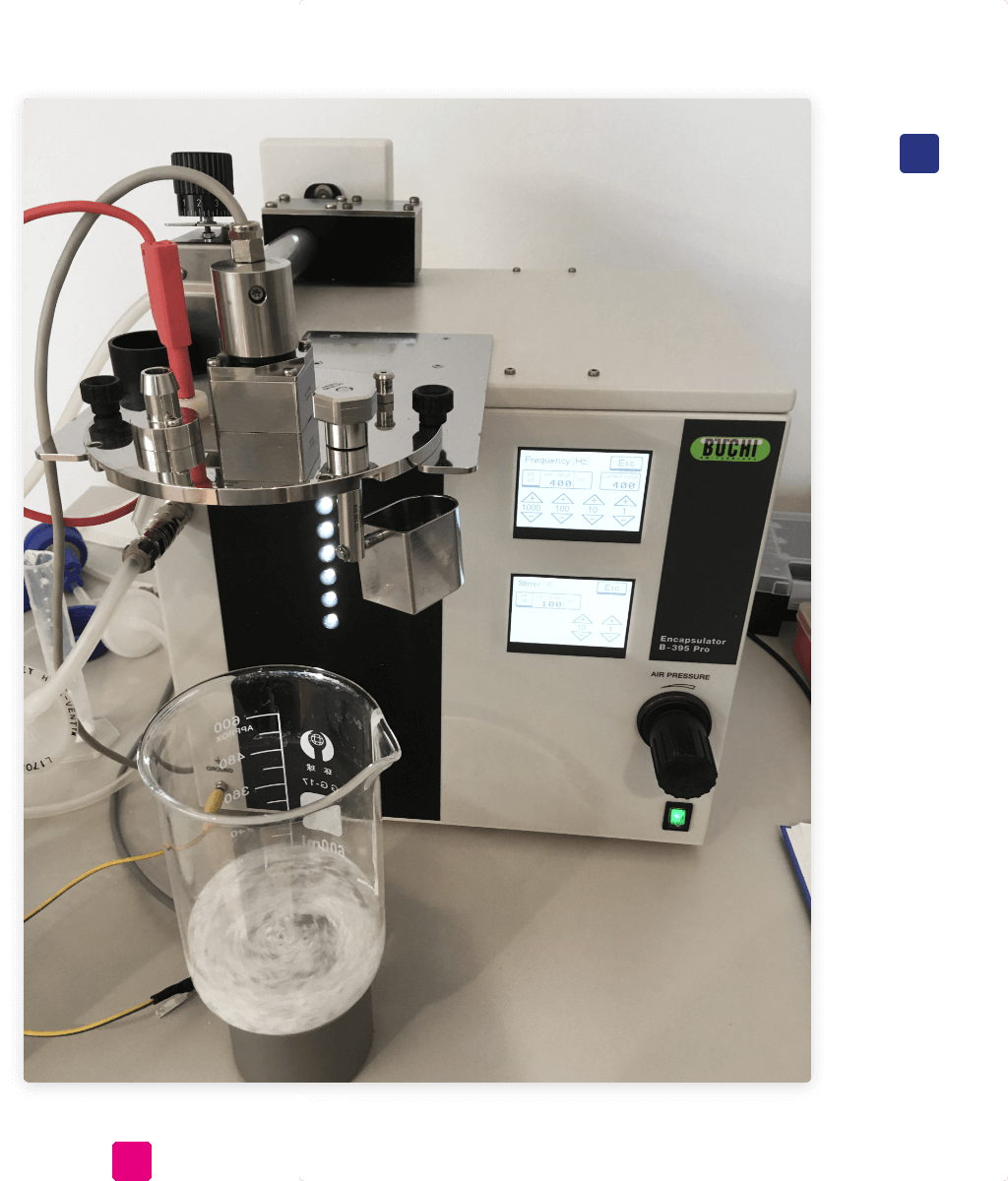

Structure
The main elements that make up the tool are:
- pressure generator,
- bottle (or syringe) to hold the samples,
- vibrating unit to create the drops,
- nozzle to define the size of the drops (80µm - 1mm),
- electrode to expand the flow of drops,
- particle solidification vessel.
The supply of single nozzles available covers a size range from 150µm to 1mm. But concentric nozzles from 200µm to 900µm are also available.
How does it work
The sample is made up of the polymer and the molecule to be encapsulated, which are mixed in the appropriate concentrations and ratios inside a container brought to a maximum pressure of 1.5 bar.
The mixture is pushed towards a nozzle from which it will come out in the form of a flow of controlled dimensions.
The configuration of the B390 for the synthesis of capsules allows to keep the encapsulating solution separate from the one that will constitute its core and differs from the previous version, with single nozzle, only for the presence of a concentric nozzle able to define the dimensions of both sections.
This function is particularly suitable for the encapsulation of hydrophobic solutions such as oils or emulsions.
They can be prepared by turrax (T-25 digital) or by means of the LM20 microfluidizer and then protected inside capsules.
A vibrating unit then divides the flow into micro-drops while the current, generated by the electrode, expands it to form a cone of modulable size.
The whole precipitates in a solution capable of solidifying the polymer, effectively creating the particles or beads which will then be suitably dried in our dryers (Binder).
Advantages
The structure and functioning of the instrument allow:
- to synthesize highly reproducible and monodisperse micro-particles and micro-capsules between 80µm and 1mm,
- to test small volumes thanks to the presence of a housing for syringes up to 60ml,
- to encapsulate particularly delicate active ingredients such as heat-sensitive molecules, bacteria, viruses and eukaryotic cells.
Applications for Nanomnia technology
With this technology Nanomnia can synthesize micro-particles, precisely modulating the size, and micro-capsules containing a liquid core made up of oils or emulsions.
Specifically, we work on:
- nutraceutical products consisting of capsules with a liquid core,
- micro-particles to encapsulate and protect cosmetic active ingredients,
- microparticles of compounds suitable for the formulation of new construction materials.


